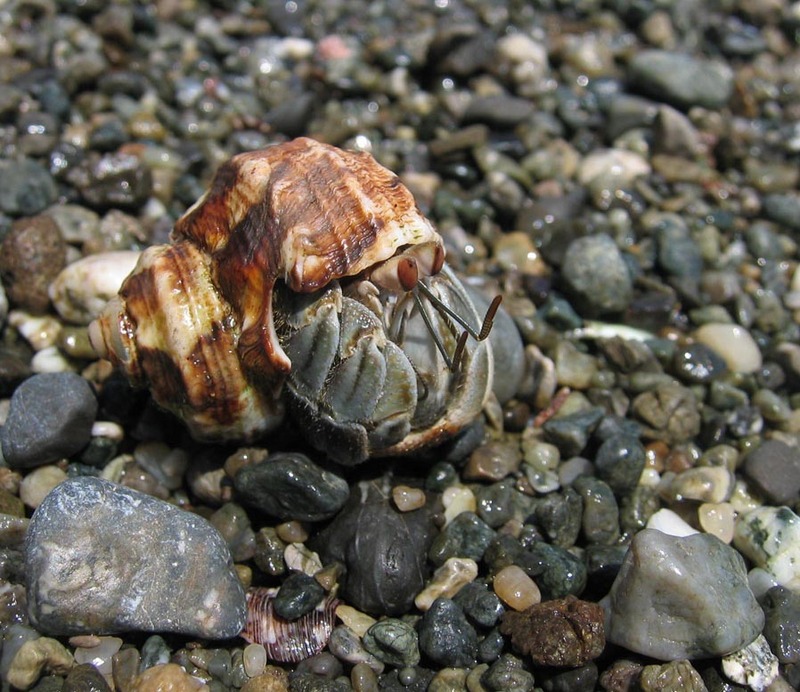Ecuadorian Hermit Crab (Coenobita compressus) - Wiki Ecuadorian hermit crab
From Wikipedia, the free encyclopedia
[Photo] A Land Hermit Crab at Parque Nacional Corcovado
The Ecuadorian hermit crab (Coenobita compressus) also known as the Pacific hermit crab is a species of land hermit crab commonly sold in the United States as a pet, along with the Caribbean hermit crab (Coenobita clypeatus).
Features and identification
Coenobita compressus is a member of the phylum Arthropoda and the class Malacostraca. They can be up to 12mm in length and are thought to be one the smallest species of land hermit crabs. They have four walking legs, a small pincer, a large pincer, and antennae. Many people who keep these crabs as pets notice that Ecuadorians can be relatively fast walkers, more so than the Caribbean hermit crab. The eyes of Ecuadorians are more oval-shaped when compared to the round eyes of Caribbean hermit crabs and are thicker. Their big claw has 4 or 5 small ridges on the upper part. The tips of the second pair of walking legs are darker than the rest of the leg. The abdomen of the Ecuadorian hermit crab is short and fat.
Ecuadorian hermit crabs vary greatly in color, some are bright (yellow, dark grey, or orange), but more often they are a tan color. Sometimes they may have a blue or green tint to their bodies or the insides of their legs.
When choosing a shell they tend to give preference to nerite, deshayes, babylonia, valencienne and other shells with a wider mouth.
Habitats
Native to Ecuador and Chile, these hermit crabs live on the Pacific seashore around the tidal pools and high-tide zone. Their bodies have adapted to this seashore existence and are able to metabolize the salt in seawater. In fact, they have adapted so well to their environment that they actually need seawater to live.
Like most hermit crabs they are scavengers and will consume seaweed, dead fish and other detritus that washes up on the shore.
Studies
A study with Coenobita compressus conducted by the department of biology at the University of Michigan showed that land hermit crabs prefer the odours of foods that they have not recently eaten. The crabs that were exposed to one food for at least 9 hours preferred foods having other odours for the next 6 hours. It is this short-term avoidance of food (like human beings who get "bored" of the same meals over and over again) that compels the crabs to seek out a wider range of food might be advantageous to the crab, possibly through the consumption of a more nutritionally balanced diet.
Retrieved from "http://en.wikipedia.org/wiki/Ecuadorian_hermit_crab"
| The text in this page is based on the copyrighted Wikipedia article shown in above URL. It is used under the GNU Free Documentation License. You may redistribute it, verbatim or modified, providing that you comply with the terms of the GFDL. |
